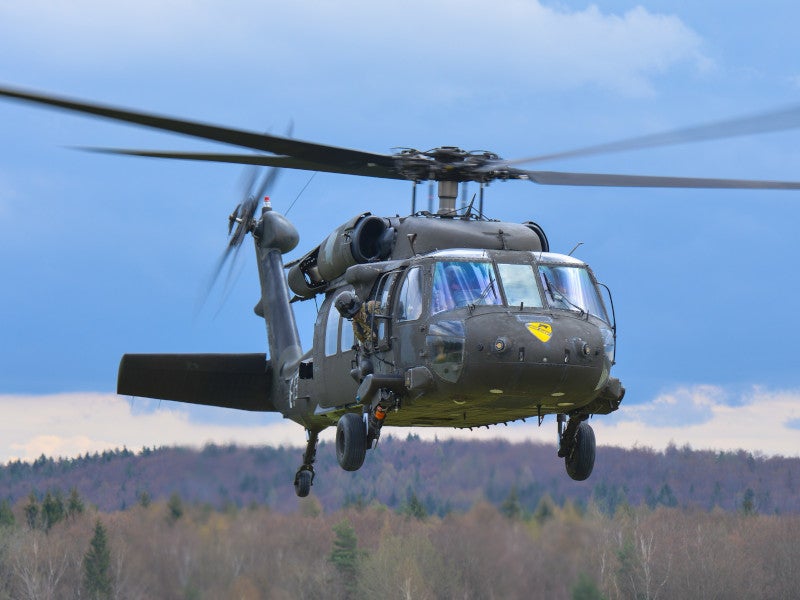Comprehending the Mechanics and Engineering Behind Uh 60 Helicopters
The UH-60 helicopter, generally understood as the Black Hawk, stands as a pinnacle of modern rotorcraft technology, personifying a mix of robust design and complex technicians. As we peel off back the layers of the UH-60's design, a globe of intricate systems and careful design comes to light.
History of UH-60 Helicopters
The background of UH-60 helicopters traces back to the late 1970s when the USA Military looked for a innovative and functional energy helicopter to replace its aging fleet. In reaction to this need, the Sikorsky Airplane Company developed the UH-60 Black Hawk helicopter. Introduced in 1979, the UH-60 promptly came to be a staple in armed forces operations as a result of its remarkable abilities.
The UH-60 was developed to excel in a selection of objectives, including army transport, clinical emptying, digital war, and special procedures. Its capability to adjust to various roles made it a beneficial possession to the U.S. uh 60. Military and other army pressures worldwide
Throughout the years, the UH-60 system has undergone numerous upgrades and variations to enhance its performance and equal developing goal demands. These helicopters have actually seen substantial solution in disputes such as the Gulf Battle, Afghanistan, and Iraq, showcasing their reliability and adaptability in diverse operational settings. The UH-60's rich history is a testimony to its long-lasting legacy as a top utility helicopter.

Engine and Power Solutions
Using advanced propulsion technology, UH-60 helicopters are equipped with innovative engine and power systems to make sure optimal efficiency and dependability in a series of functional circumstances. The UH-60, generally understood as the Black Hawk, is powered by two General Electric T700-GE-701D engines, each capable of supplying up to 1,940 shaft horse power. These turboshaft engines offer the needed thrust for the helicopter to accomplish its objectives efficiently, consisting of troop transportation, medical discharge, and battle assistance.

Rotor System and Aerodynamics
Just how do the blades system and aerodynamics of UH-60 helicopters add to their functional effectiveness and trip capabilities? The blades system of the UH-60 helicopter plays a vital duty in supplying lift and propulsion. The UH-60 features a four-bladed, totally verbalized rotor system that permits for high maneuverability and security during trip. This style enables the helicopter to execute a variety of missions, from transportation and medical discharge to fight procedures.
Aerodynamics additionally play an essential duty in the performance of UH-60 helicopters. The structured fuselage and blades blade design lower drag, enabling the helicopter to achieve greater rates and much better fuel efficiency. The aerodynamic layout of the UH-60 also contributes to its capability to run in diverse environmental problems, consisting of warm temperature levels and high altitudes.
Avionics and Flight Control Solution

In its intricate coordination with the rotor system and aerodynamics of UH-60 helicopters, the avionics and flight control systems develop a critical network of technologies forming the airplane's functional capabilities. In the UH-60, these systems include digital displays, communication radios, General practitioner navigating, climate radar, and auto-pilot systems.
The trip control systems of the UH-60 are responsible for translating the pilot's inputs into the appropriate modifications to the blades system, making sure steady flight and maneuverability. These systems include hydraulic actuators, servos, and computer systems that interact to regulate the tail and read review main blades, along with other trip control surfaces. By precisely handling the helicopter's flight characteristics, these systems allow pilots to carry out a vast array of missions, from transportation and search-and-rescue to combat procedures, with precision and self-confidence.
Role and Applications in Air Travel
Avionics systems in UH-60 helicopters include a variety of electronic systems that aid in navigation, communication, tracking, and managing different aircraft features. These systems consist of electronic screens, autopilot systems, communication radios, General practitioner navigating devices, and weather condition radar. Additionally, these Continued systems incorporate safety attributes such as auto-pilot modes, terrain recognition advising systems, and security augmentation systems to enhance the total safety and security and operational capabilities of the UH-60 helicopters in various goals, including troop transportation, medical evacuation, search and rescue, and airborne firefighting.
Conclusion
In final thought, the UH-60 helicopter is a functional aircraft with a rich history and progressed design. Its engine and power systems, blades system, the rules of aerodynamics, avionics, and flight control systems all function with each other to make it a reputable and reliable equipment.
In its detailed coordination with the rotor system and the rules of aerodynamics of UH-60 helicopters, the avionics and trip control systems develop a crucial network of innovations shaping the aircraft's operational abilities.The trip control systems of the UH-60 are liable for converting the pilot's inputs into the suitable adjustments to the blades system, making sure steady trip and ability to move. Avionics systems in check these guys out UH-60 helicopters encompass a range of electronic systems that help in navigation, communication, surveillance, and controlling numerous airplane features. Additionally, these systems integrate safety features such as auto-pilot modes, terrain recognition warning systems, and security enhancement systems to improve the general safety and operational abilities of the UH-60 helicopters in various objectives, including army transportation, clinical discharge, search and rescue, and airborne firefighting.
Its engine and power systems, rotor system, aerodynamics, avionics, and trip control systems all function together to make it a effective and reputable equipment.